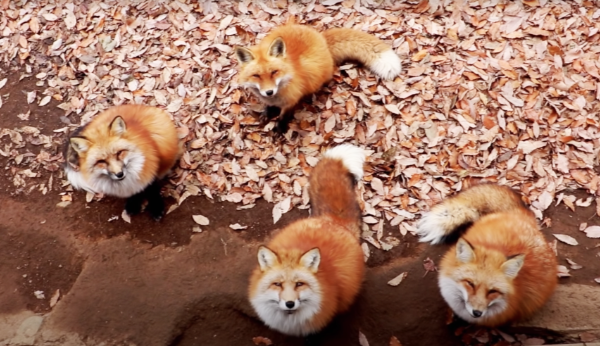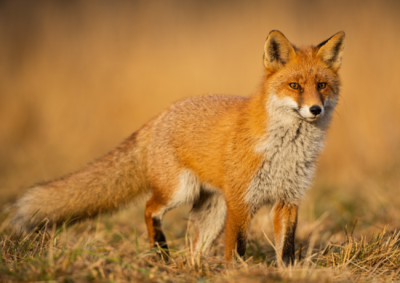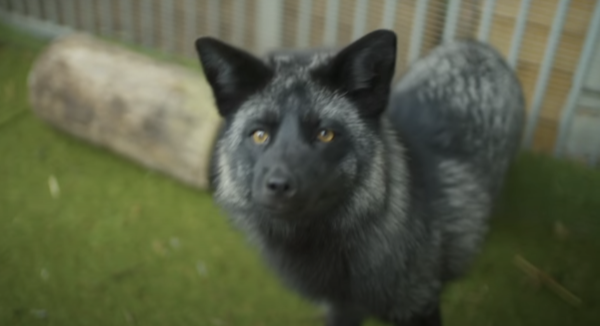Description
Fox Description
Foxes are omnivorous animals that are keen on their feet. They are often mistaken for other members of the Canidae family, which includes jackals, wolves, and dogs. They are sometimes even mistaken for raccoons.
Foxes are very social and also live long lives. Foxes also have many unique characteristics that separate them from other animals.
Appearance
Red foxes, in general, are about 90-105cm long and about 35-40 cm tall. Most adults weigh 10-15 pounds while the largest individuals can even approach 30 pounds. The red fox has a coat of long guard hairs and soft underfur that is typically a reddish-brown color.
Even though the red fox is the most well-known, it is not the only type of fox species. Foxes come in many different forms and variations like:
The Arctic Fox- The arctic fox takes on the appearance of dark gray and turns bluish brown in the summer. In the winter though, its fur is white or creamy white. The artic fox also has thick fur and hair on its paw pads that help it keep warm.
Grey Fox- The gray fox has a peppery gray on the top of its body and reddish-brown on its sides. Its legs and feet are also a reddish color. It has a long bushy tail with black stripes on the top. The gray fox has pointed ears and a muzzle with long hooked claws.
Silver Fox- The silver fox is more of a melanistic form of the red fox. Many of them represent about 10 percent of the red fox population. The silver fox’s coloration can range from black to bluish-gray and silver with a white-tipped tail.
Diet
The red fox eats a variety of foods including: fruit, berries, and grasses. The red fox also eats birds and small mammals like squirrels, rabbits, and mice.
A large part of the red fox’s diet is made of invertebrates like crickets, caterpillars, grasshoppers, beetles, and crayfish. Sometimes the fox will store extra food that is needed under snow or dirt.
If you have a pet fox you should not feed it things like grains. Foxes do not usually eat grains in the wild, therefore you should avoid feeding it things like wheat, rice, oats, and other grain matter in their food.
Foxes usually get their carbohydrates from prey like mice and birds that actually eat grains. Foxes also need vitamins and supplements which is essential for their living. Taurine is especially good for foxes and is found in formulated fox diets or grain-free foods.
Smaller foxes typically eat about 500 milligrams a day while larger foxes eat more.
Cubs usually start eating solid food around four weeks old and are usually completely weaned off of milk by the age of 12 weeks.
Behavior

The red fox, in particular, is mostly nocturnal. Sometimes though, it will venture out in the day. The red fox, unlike other mammals, can hear low frequency sounds very well. This is helpful when the fox wants to catch its prey.
With its pointed ears, it can tell if someone is coming close to potentially harm it, or even if the prey is trying to run away. It can get close and pounce on its prey. This makes foxes in general, a very athletic mammal.
With the exception of breeding females, the fox does not usually use a den. Sometimes it will sleep in the open, wrapping its bushy tail around its nose to stay warm. When it does use a den, it will usually find an abandoned rabbit or marmot den instead of making its own.
This means that foxes, in general, are creatures that tend to be always on the move. They exhibit more nomadic behavior. With foxes, there is also a strict dominance hierarchy within social groups.
One fox will lead the group over another one. A subordinate fox will tend to approach a more dominant fox with its body held low. It often crunches or even wriggles on its back at the feet of the more dominant animals in a puppy-like gesture.
Dominant cubs have preferential access to food and grow much faster. In larger litters, dominant cubs may look four weeks older than subordinates. This often leads to the mistaken impression of two pooled litters.
Foxes also live in social groups. In these groups, the presence of four adults is usually common.
Mid-march is the peak time for births of foxes. The average litter size is four or five cubs. For the first few weeks, the vixen spends most of her time with her cubs and relies on the male to bring her food. Unless disturbed, cubs usually stay in their birthplace until early June, though they may abandon it earlier.
Habitat
Red foxes usually live in forested areas, though they can also be found in places like the mountains, grasslands, and deserts.
They make their homes by digging burrows in the ground. These burrows, which are called dens, provide a cool area to sleep and a good location to store things. Foxes also move from den to den.
They usually take other abandoned dens and make them into their own.
Arctic foxes- Arctic foxes, around the summer, usually live in the tundra at the edge of the forest. In the winter, they are found on ice floes where its white coat serves as a nice camouflage. The den of the arctic fox is usually a burrow in a hillside or bank.
Silver fox- Silver foxes may be found over most of the northern hemisphere and even in Australia. In places like North America, they are found mostly in the Northeast.





